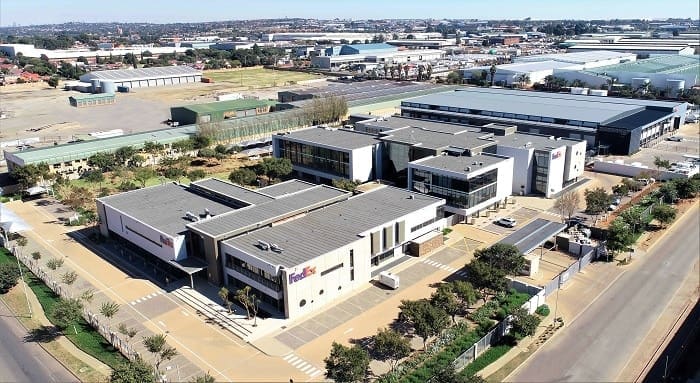FedEx Express, a subsidiary of Nasdaq-listed FedEx Corp., the world’s largest express transportation company, has launched its new state-of-the-art facility in Johannesburg, near the OR Tambo International Airport.
The new Southern Africa hub, which consolidates three facilities into a single location, boosts operational efficiencies to meet growing customer demand across the region.
With the new facility, FedEx Express has more than 6,000 m2 dedicated to operations and warehousing, and more than 11,000 m2 of office space in a modern, sustainable building.
“Moving to this new facility reinforces our commitment to our customers in the region,” says Taarek Hinedi, vice president operations for Africa and the Middle East at FedEx Express.
“With closer and easier access to OR Tambo International Airport, the facility enables us to efficiently handle the growing volume of e-commerce in the region, essential for the region’s recovery and future growth. Particularly with Johannesburg as a regional hub serving the continent.”
To process the volume of shipments that come through Johannesburg, the facility includes automated sorting technology that can process up to 6,000 packages per hour. It also has in-station vehicle loading, allowing 65 vehicles to be loaded at the same time, direct from the sorting lines.
“The new facility and operations have been equipped with state-of-the-art sort automation, aided with the latest scanning technology to best serve customers.”
The FedEx Express Southern Africa Road Network (SARN) will also now operate from this location, with a fleet of more than 40 longer-haul delivery vehicles carrying essential goods, trade items, and customer goods on the domestic and cross-border routes each day.
“The building’s location near OR Tambo International Airport, where the FedEx Express all-cargo flight operates from, means closer proximity to the major shopping centre of Johannesburg’s East Rand. Customers can shop from the mall and easily ship to anywhere in South Africa and around the world”.
In addition to supporting the more efficient movement of goods, the facility incorporates sustainable technologies designed to meet local needs. To conserve energy, motion detectors activate energy-saving lights only when rooms are occupied.
Multiple water-storage tanks around the property collect rainwater, reducing reliance on municipal water sources, which is then recycled to cool the heating, ventilation, and air-conditioning system, and to sustain the building’s garden, which is planted with more than 30 species of indigenous and water-sensitive plants.
“We’re delighted to present our new location, as we continue to transform our network and services to support what’s next for Africa’s businesses and consumers,” said Hinedi.

